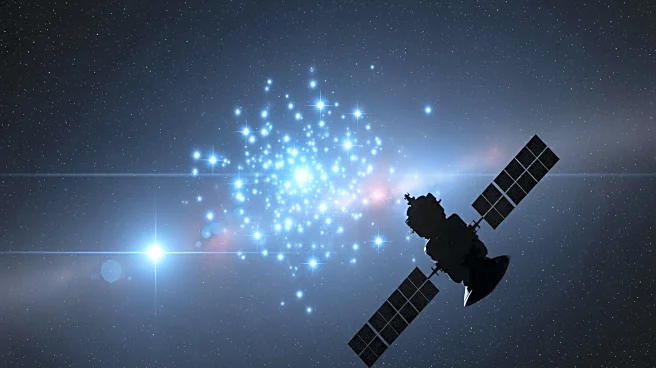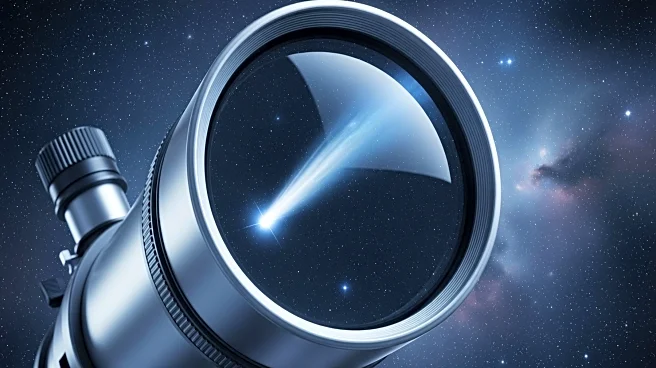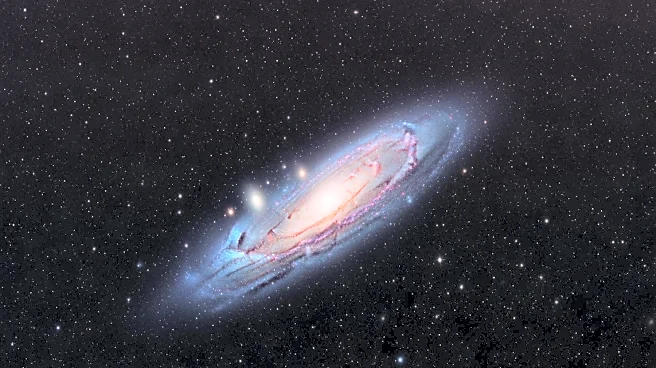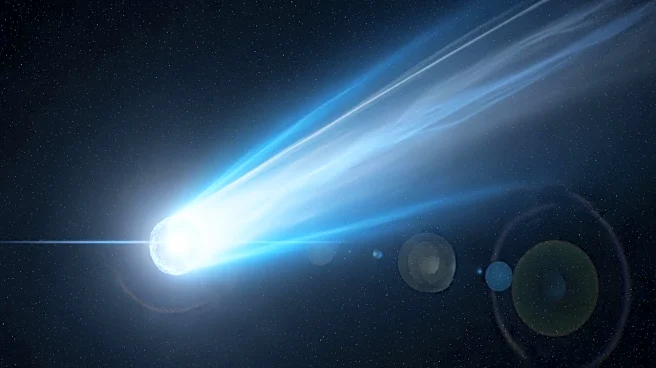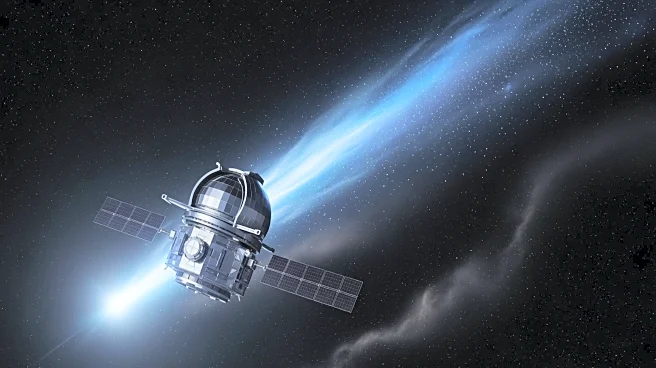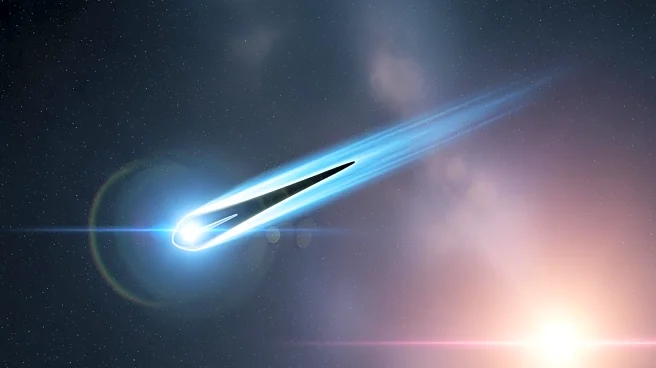What's Happening?
Edwin Hubble, born on November 20, 1889, in Marshfield, Missouri, is celebrated for his groundbreaking contributions to astronomy. In 1923, Hubble made seminal observations of the Andromeda Galaxy and
a Cepheid variable, which significantly broadened the understanding of other galaxies and the universe's scale. During the 1930s, he established a system for classifying galaxies by their observed morphological types, derived from photographic data. This classification was organized into a tuning fork-shaped diagram, encompassing spiral, barred spiral, lenticular, and elliptical galaxies, in addition to his identification of irregular galaxies. Subsequent astronomical investigations expanded this classification, identifying peculiar galaxies characterized by explosive or disruptive events, and dwarf spheroidals as numerous within the local universe.
Why It's Important?
Edwin Hubble's work fundamentally changed the field of astronomy by expanding the known universe beyond the Milky Way. His classification system for galaxies provided a framework that astronomers continue to use today, aiding in the understanding of galaxy formation and evolution. Hubble's discoveries laid the groundwork for the development of modern cosmology, influencing theories about the universe's expansion and the Big Bang. His contributions have had a lasting impact on scientific research and education, inspiring generations of astronomers and astrophysicists.


